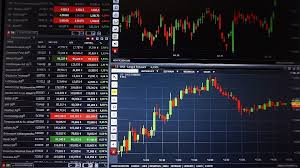
Understanding Currency Trading in Forex
Currency trading, commonly referred to as Forex (foreign exchange), is one of the most dynamic and exciting markets in the world. Each day, traders engage in the exchange of national currencies for investment or commercial purposes. As this market has grown, so too has the complexity of trading strategies and the tools available for investors. For those looking to start their journey in this field, it is vital to grasp the fundamental principles of Forex trading. For example, if you’re located in Kuwait, you might want to explore currency trading forex Forex Brokers in Kuwait for personalized services.
What is Forex Trading?
Forex trading involves buying one currency while simultaneously selling another. The Forex market operates 24 hours a day, five days a week, making it accessible to traders across the globe. Unlike stock markets which function during specific hours, Forex allows for trades at any time, facilitating a high volume of transactions and liquid markets. At the heart of Forex trading lies a currency pair, such as EUR/USD or GBP/JPY, representing the exchange rate between two currencies.
Why Trade Forex?
The appeal of Forex trading lies in its potential for profit, accessibility, and flexibility. Here are some reasons why traders are attracted to the Forex market:
- High Liquidity: The Forex market is the largest and most liquid financial market globally, with trillions of dollars traded daily. This liquidity allows for swift transactions and minimal price distortions.
- Leverage: Many Forex brokers offer leverage, enabling traders to control larger positions with a smaller amount of capital. This can amplify potential profits, but it also increases risks.
- Flexibility: With the market open around the clock, traders can choose their trading hours based on personal schedules and preferences.
- Diverse Trading Options: The Forex market features numerous currency pairs, allowing for diverse trading strategies and the ability to capitalize on various economic situations.
Understanding Currency Pairs
Currency pairs are a core concept in Forex trading. Each pair consists of a base currency and a quote currency. The first currency in the pair is the base currency, and the second is the quote currency. For example, in the pair EUR/USD, the Euro is the base currency, and the US Dollar is the quote currency. The price indicates how much of the quote currency is needed to purchase one unit of the base currency. Understanding how currency pairs work is fundamental for making informed trading decisions.

Forex Trading Strategies
Successful Forex trading often relies on well-defined strategies. Here are several commonly used strategies that traders employ to maximize their profits:
1. Day Trading
Day trading involves executing multiple trades throughout a single day, capitalizing on small price movements. This strategy requires a keen eye and a deep understanding of market analysis, as traders look to enter and exit positions quickly.
2. Swing Trading
Swing trading is a medium-term strategy that seeks to capture price swings over a few days to weeks. Traders look to identify trends and hold positions for a more extended period, allowing them to take advantage of larger price movements.
3. Scalping
Scalping is a short-term trading strategy where traders aim to make small profits from numerous trades executed over short periods. Scalpers need to be highly focused and often use technical analysis to manage their trades.

4. Position Trading
Position trading is a long-term strategy where traders hold positions for weeks, months, or even years. This approach typically requires a more extensive analysis of economic indicators and trends rather than short-term price movements.
Risks in Forex Trading
While the potential for profit in Forex trading is significant, it comes with a range of risks. Traders must be aware of the following risks before delving into the market:
- Market Risk: The Forex market can be volatile, and dramatic price movements can lead to considerable losses.
- Leverage Risk: While leverage can increase profits, it also magnifies losses. Traders need to manage their leverage thoughtfully.
- Interest Rate Risk: Changes in interest rates can have a significant impact on currency values, affecting traders’ positions.
- Counterparty Risk: This is the risk that the broker you are trading with may default on their obligations, particularly in cases where a broker is not well regulated.
Choosing a Forex Broker
Selecting the right Forex broker is crucial for successful trading. Here are key factors to consider when choosing a broker:
- Regulation: Ensure that the broker is regulated by a reputable authority, providing you with a layer of protection for your funds.
- Trading Platform: A good trading platform should be intuitive, reliable, and equipped with essential tools for analysis.
- Spreads and Commissions: Look for brokers who offer competitive spreads and transparent commission structures to maximize your profits.
- Customer Service: Reliable customer support can make a significant difference, especially during trading hours when quick assistance might be needed.
Conclusion
Currency trading in the Forex market can be an incredibly rewarding venture for those willing to invest time and effort into understanding the principles and mechanics. By developing sound strategies, managing risks effectively, and choosing the right brokers, aspiring traders can navigate this complex market with confidence. Whether you are a beginner or an experienced trader looking to refine your approach, the key is continuous learning and adaptation to market changes. With diligence and discipline, Forex trading offers an exciting pathway to financial independence and success.